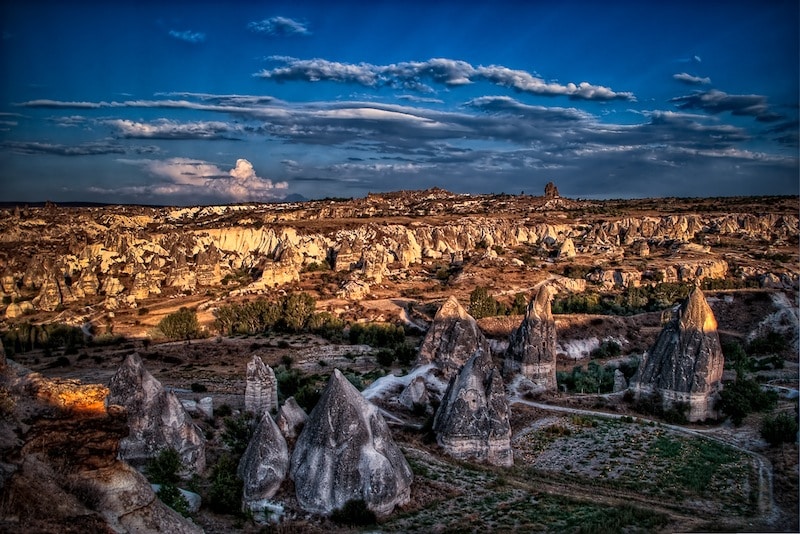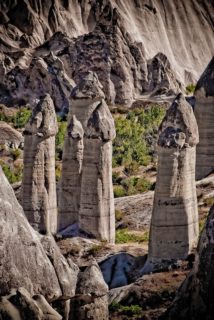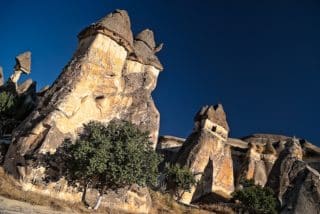After covering hundreds of kilometres of steppe we arrived under a dry and cracky tuff stone. It may seem like like the introduction for Dante’s Inferno, instead it’s just the prologue to Cappadocia‘s marvels.
This historic region located in Central Anatolia, Turkey, is a heap of geological wonders. Changing shapes and colours depending on the sun’s position and the weather conditions, a landscape full of peaks and gaps, rounded by water, wind and man, who dug the tuff for centuries in order to build houses, shelters and churches.
Who knows what the first western visitors may have thought in front of such a lunar landscape?
At that time the tuff pinnacles – the so-called fairy chimneys – were inhabited, the galleries on the rocky walls were full fertilizing excrements and the only road coming through was a part of the Silk Route.
Today there is a four-lane highway, but the caravanserai still stands to point the way. It doesn’t assist the travellers anymore, instead it hosts dance shows of dervishes. Its bulky body stands against the sky for kilometres.
The fairy chimneys aren’t inhabited anymore and most of Göreme‘s hotels sell as chimney rooms standard rooms of tuff bricks. Into the chimney, at most, there is the reception.
Göreme is the touristic centre of the region. It’s the place to go if you are looking for other travellers, internet cafés or any other western facility. But if you really want to stand out from the mass, you should move four kilometres north towards Çavuşin, a few buildings and a mosque, where the time is articulated by passing seasons and the muezzin’s chants, and the elders spend their days in the square.
In Çavuşin you will find quite hotels in the shadow of a pierced rock, which once were storage rooms, houses or churches. And beside it lies the beautiful Pink Valley.
You will need two or four wheels to move for some kilometres and get to Mustafapaşa, a Greek village which became Turkish when the two countries exchanged some part of population. The ancient Greek stone buildings were falling apart before someone made them into boutique hotels, restoring Mustafapaşa’s charm. Still, tourists are few and there is much quite.
And if you want to give up to some French taste, your destination is Uhcisar, where Club Med once started the touristic fame of Cappadocia. The French signs and menus may look a bit awkward, but the village is very beautiful, rounded up over a hill and dominated by a tuff fortress.
Due to its position, Uhcisar il clearly visible from any corner of the valley and offers an impressive view over the fairy chimneys and the many little canyons, and over the pink and red rocky walls which lighten up when the sunset highlights their colours.












